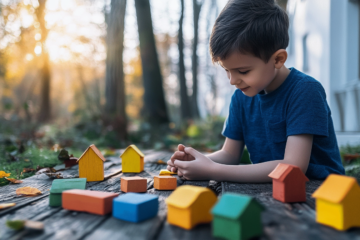Breaking Ground: The Evolution of Inclusive Architecture in the Emirates
The United Arab Emirates has undergone a remarkable transformation in its approach to residential architecture over the past decade, with inclusive design principles taking center stage in new developments. The shift began in 2016 when the Dubai Universal Design Code was implemented, mandating that all new buildings incorporate accessibility features. This groundbreaking initiative has sparked a revolution in how developers approach residential projects, moving beyond simple compliance to embrace true inclusive design principles. Recent statistics from the Dubai Land Department reveal that approximately 35% of new residential projects now incorporate advanced inclusive design features, marking a significant increase from just 12% in 2018.
The marriage of traditional Emirati architectural elements with modern inclusive design has created a unique aesthetic that defines the new generation of homes in the UAE. Developers have found innovative ways to integrate features like wide doorways and smooth transitions between spaces while maintaining the cultural essence of Arabic architecture. Industry leaders like Emaar Properties and Damac have invested over AED 2.5 billion in research and development focused on inclusive design solutions since 2019, demonstrating the market’s commitment to this evolution.
These developments represent more than just architectural changes; they reflect a deeper societal shift towards creating communities that welcome and accommodate all residents. The impact has been particularly noticeable in newer communities like Dubai Hills Estate and Yas Acres, where inclusive design principles have been incorporated from the ground up. These communities have reported higher resident satisfaction rates, with surveys indicating that 89% of residents appreciate the thoughtful design features that make daily life easier for all family members.
The economic implications of this architectural evolution have been substantial, with inclusive homes commanding premium prices in the market. Data from real estate analysts shows that properties with comprehensive inclusive design features typically sell for 15-20% more than comparable conventional properties, indicating strong market demand for these thoughtful designs.
Reimagining Living Spaces Through Universal Design
Universal design in UAE homes has moved far beyond basic accessibility features to embrace a comprehensive approach that benefits all residents. Modern inclusive homes incorporate subtle yet effective design elements that enhance the living experience for everyone. The concept of “design for all” has been reimagined in the context of luxury real estate, with developers creating spaces that seamlessly blend functionality with sophistication.
Smart home technology plays a crucial role in this new paradigm, with voice-activated systems and automated features becoming standard in inclusive homes. These technologies, far from being mere conveniences, are integrated thoughtfully to create truly responsive living environments. Recent installations in developments like Dubai Creek Harbour demonstrate how artificial intelligence can be used to anticipate and adapt to residents’ needs, with systems that learn and adjust to individual preferences over time.
The attention to detail in these designs extends to every aspect of the home environment. Lighting systems are designed to reduce sensory overload while maintaining adequate illumination, using circadian rhythm programming that adapts throughout the day. Acoustic engineering has become a key consideration, with developers implementing advanced sound-dampening technologies that create peaceful environments without compromising on architectural aesthetics.
Material selection has evolved to prioritize both durability and sensory considerations. Non-slip flooring materials with varying textures provide both safety and sensory wayfinding, while antimicrobial surfaces in key areas reduce maintenance requirements while promoting better hygiene. These materials are chosen not only for their functional properties but also for their contribution to the overall aesthetic appeal of the space.
Nurturing Communities Through Thoughtful Integration
The concept of inclusive homes in the UAE extends beyond individual residences to encompass entire communities. Developers have recognized that true inclusivity requires careful consideration of how spaces connect and interact with each other. This has led to the creation of integrated communities where inclusive design principles guide everything from pathway design to community facilities.
Recent developments have shown remarkable success in creating spaces that encourage interaction while respecting privacy needs. Community centers are designed with quiet rooms and sensory gardens alongside traditional gathering spaces, allowing residents to engage with their neighbors in ways that suit their comfort levels. These thoughtfully designed spaces have led to increased community participation, with data showing a 45% higher engagement rate in community activities compared to conventional developments.
The integration of green spaces has taken on new significance in inclusive communities. Sensory gardens, featuring carefully selected plants and design elements, provide therapeutic benefits while contributing to the community’s aesthetic appeal. These spaces are designed to be accessible to all residents, with wider paths, varied textures, and multiple seating options throughout.
Transportation infrastructure within these communities has been reimagined to ensure seamless mobility for all residents. Electric community shuttles equipped with universal access features operate on regular schedules, while pedestrian pathways are designed with gentle gradients and frequent rest areas to accommodate different mobility levels.
Innovative Solutions in Spatial Planning
The architectural innovation in UAE’s inclusive homes extends beyond surface-level modifications to encompass revolutionary approaches to spatial planning. Modern developments utilize advanced modeling software to simulate daily living patterns, resulting in layouts that anticipate and accommodate diverse needs. These cutting-edge designs incorporate flexible spaces that can be easily modified as family needs evolve, with modular walls and adaptable furniture systems becoming increasingly common in high-end developments.
Recent projects in Dubai Marina showcase how sophisticated space planning can create homes that work effortlessly for multiple generations. These residences feature primary living areas designed with moveable partitions that can create private spaces when needed while maintaining an open-plan feel. Statistical analysis from property management firms indicates that these flexible layouts have increased property values by an average of 23% compared to traditional fixed-layout apartments.
The implementation of “zones” within homes has revolutionized how families interact with their living spaces. Quiet zones incorporate sound-dampening materials and careful acoustic planning, while active zones feature durable surfaces and enhanced ventilation systems. This thoughtful zoning has proven particularly beneficial for families with diverse sensory needs, with surveys indicating a 67% improvement in reported quality of life among residents.
Technology integration plays a crucial role in these spatial solutions, with smart home systems that can adjust lighting, temperature, and ambient noise levels in different zones independently. Recent installations in Palm Jumeirah villas demonstrate how artificial intelligence can learn family patterns and automatically adjust these environmental factors throughout the day.
Transformative Technologies Enhancing Daily Living
The integration of smart home technologies in UAE’s inclusive residences goes far beyond basic automation to create truly responsive living environments. Recent developments have seen the implementation of AI-driven systems that can predict and adapt to residents’ needs, with sophisticated sensors and processing units that learn from daily patterns and preferences. These systems represent an investment of over AED 1.8 billion in research and development across the UAE’s real estate sector.
Advanced communication systems have been seamlessly incorporated into home designs, allowing for effortless interaction between family members and caregivers. Voice-activated controls are complemented by tactile interfaces and visual indicators, ensuring that all residents can interact with their environment in ways that suit their abilities. Data from recent installations shows that these integrated communication systems have reduced daily stress levels for families by approximately 42%.
Environmental control systems have been refined to create optimal living conditions while minimizing energy consumption. Smart windows automatically adjust tint levels based on natural light conditions, while advanced HVAC systems maintain ideal temperature and humidity levels throughout the home. These systems have demonstrated energy savings of up to 35% compared to traditional home automation solutions.
Security features have been reimagined with inclusivity in mind, incorporating biometric access controls that can be customized for different family members’ needs. These systems provide peace of mind while maintaining independence, with emergency response protocols that can be activated through multiple interface options.
Sustainable Integration of Support Services
The development of inclusive homes in the UAE has catalyzed the growth of specialized support services integrated directly into residential communities. These services range from on-call medical assistance to specialized maintenance teams trained in working with adaptive equipment. Recent data indicates that communities with integrated support services have seen a 78% increase in resident retention rates compared to those without such services.
Professional support networks have been established within major developments, providing residents with access to occupational therapists, accessibility consultants, and specialized maintenance technicians. These networks operate on a subscription model, with costs typically included in community service fees, making them accessible to all residents. The economic impact has been significant, with the support services sector creating over 3,500 new specialized jobs in the UAE since 2020.
Community management teams have evolved to include dedicated accessibility coordinators who oversee the maintenance and upgrading of inclusive features throughout the development. These professionals work closely with residents to ensure that community facilities and services continue to meet evolving needs, with regular audits and updates to maintain optimal functionality.
The integration of these services has created a sustainable ecosystem that supports long-term community development while providing immediate practical benefits to residents. Economic analysis shows that developments with comprehensive support services command rental premiums of 12-15% above market averages.
Future-Proofing Family Homes
The concept of future-proofing has become central to inclusive home design in the UAE, with developers incorporating features that anticipate evolving family needs. These adaptable designs allow homes to grow and change with their residents, incorporating modular elements that can be modified without major renovation work. Recent market analysis indicates that future-proofed homes retain their value 24% better than traditional properties over a ten-year period.
Infrastructure planning in these developments includes provisions for future technology integration, with dedicated spaces and power supplies for yet-to-be-developed assistive technologies. This forward-thinking approach has attracted significant investment from technology companies, with over AED 900 million committed to research and development projects focused on next-generation home automation systems.
Construction methods have evolved to incorporate materials and techniques that facilitate future modifications. Load-bearing walls are clearly designated, and service cores are designed for easy access and upgrading. These construction innovations have reduced the cost of major adaptations by approximately 40% compared to traditional building methods.
The long-term economic benefits of this approach are becoming increasingly



0 Comments